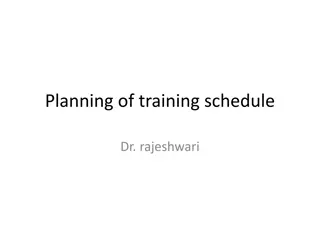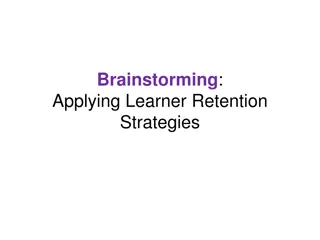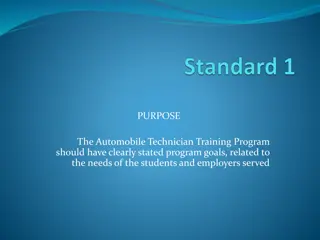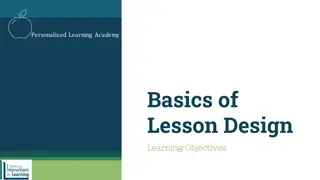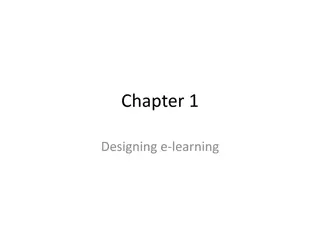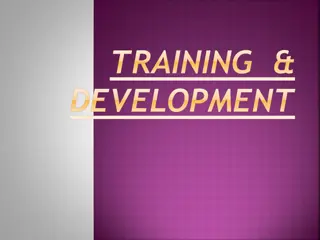Designing a Training Program: Process and Strategies
Designing a training program involves identifying needs, setting objectives, developing materials, and implementing the training. The process includes conducting a needs assessment, defining learning objectives, designing training materials, and executing the program. Through effective program design, organizations can address skill gaps, improve employee performance, and achieve business goals.
Download Presentation

Please find below an Image/Link to download the presentation.
The content on the website is provided AS IS for your information and personal use only. It may not be sold, licensed, or shared on other websites without obtaining consent from the author. Download presentation by click this link. If you encounter any issues during the download, it is possible that the publisher has removed the file from their server.
E N D
Presentation Transcript
DR. M. SHAJAHAN ASSISTANT PROFESSOR OF COMMERCE(SF) JAMAL MOHAMED COLLEGE TRICHY-20
TRAINING AND DEVELOPMENT DESIGNING A TRAINING PROGRAMME What do you mean by training Programme? Training program design is the process of developing new training and development courses or lessons for employees. Designing training programs can spot skill gaps that need to be filled in order to improve employee performance.
HOW DESIGNING A PROGRAMME 1) Identify the need for training. Talk with the learner or with the learner's manager or supervisor to assess the learner's skills, knowledge, and experience 2) Assess the need for instructor-led training. 3) Define training objectives. 4) Design the training. 5) Develop the training. 6) Evaluate the training
PROCESS OF DESIGNING A TRAINING PROGRAM The process of designing a training program is not an easy task. Many problems occur in the process of designing a training program. Step 1: Perform a Training Needs Assessment The assessment of a training program has four-step to be followed: Identifying the business goal that can be supported by a training program. Determining the tasks that workers should perform to make the company reach its goals. Conducting the training activities that will help in enhancing the learning of the workers to perform the tasks more effectively. Determining the learning characteristics of the workers that will make the training effective
Step 2: Develop Learning Objectives A learning objective address thing that your employees can get to know like: What is the product flow? How to maintain the product flow cycle? Importance of good product lifecycle
Step 3: Design Training Materials While designing your materials, keep the following points in mind: Focus on the learning needs of your employees. Create training assessments that can directly relate to the learning objectives. Include more hands-on practice or simulation as possible. Put the employees in control of the learning process
Step 4: Implement the Training Implementation can take different forms by moving forward to the training. It can be classroom instructions, the completion of e- learning modules, or more.
Step 5: Evaluate the Training This method involves evaluating the training at four levels. Those four levels of evaluation are: Employees reaction to training. Employees learning through the training. Employee s job behaviour post-training. Beneficial business results.









